Thi Kieu Khanh Ho
Graph-Jigsaw Conditioned Diffusion Model for Skeleton-based Video Anomaly Detection
Mar 18, 2024Abstract:Skeleton-based video anomaly detection (SVAD) is a crucial task in computer vision. Accurately identifying abnormal patterns or events enables operators to promptly detect suspicious activities, thereby enhancing safety. Achieving this demands a comprehensive understanding of human motions, both at body and region levels, while also accounting for the wide variations of performing a single action. However, existing studies fail to simultaneously address these crucial properties. This paper introduces a novel, practical and lightweight framework, namely Graph-Jigsaw Conditioned Diffusion Model for Skeleton-based Video Anomaly Detection (GiCiSAD) to overcome the challenges associated with SVAD. GiCiSAD consists of three novel modules: the Graph Attention-based Forecasting module to capture the spatio-temporal dependencies inherent in the data, the Graph-level Jigsaw Puzzle Maker module to distinguish subtle region-level discrepancies between normal and abnormal motions, and the Graph-based Conditional Diffusion model to generate a wide spectrum of human motions. Extensive experiments on four widely used skeleton-based video datasets show that GiCiSAD outperforms existing methods with significantly fewer training parameters, establishing it as the new state-of-the-art.
Open-Set Multivariate Time-Series Anomaly Detection
Oct 18, 2023Abstract:Numerous methods for time series anomaly detection (TSAD) methods have emerged in recent years. Most existing methods are unsupervised and assume the availability of normal training samples only, while few supervised methods have shown superior performance by incorporating labeled anomalous samples in the training phase. However, certain anomaly types are inherently challenging for unsupervised methods to differentiate from normal data, while supervised methods are constrained to detecting anomalies resembling those present during training, failing to generalize to unseen anomaly classes. This paper is the first attempt in providing a novel approach for the open-set TSAD problem, in which a small number of labeled anomalies from a limited class of anomalies are visible in the training phase, with the objective of detecting both seen and unseen anomaly classes in the test phase. The proposed method, called Multivariate Open-Set timeseries Anomaly Detection (MOSAD) consists of three primary modules: a Feature Extractor to extract meaningful time-series features; a Multi-head Network consisting of Generative-, Deviation-, and Contrastive heads for capturing both seen and unseen anomaly classes; and an Anomaly Scoring module leveraging the insights of the three heads to detect anomalies. Extensive experiments on three real-world datasets consistently show that our approach surpasses existing methods under various experimental settings, thus establishing a new state-of-the-art performance in the TSAD field.
Multivariate Time-Series Anomaly Detection with Contaminated Data: Application to Physiological Signals
Aug 24, 2023Abstract:Mainstream unsupervised anomaly detection algorithms often excel in academic datasets, yet their real-world performance is restricted due to the controlled experimental conditions involving clean training data. Addressing the challenge of training with noise, a prevalent issue in practical anomaly detection, is frequently overlooked. In a pioneering endeavor, this study delves into the realm of label-level noise within sensory time-series anomaly detection (TSAD). This paper presents a novel and practical end-to-end unsupervised TSAD when the training data are contaminated with anomalies. The introduced approach, called TSAD-C, is devoid of access to abnormality labels during the training phase. TSAD-C encompasses three modules: a Decontaminator to rectify the abnormalities (aka noise) present in the training data, a Variable Dependency Modeling module to capture both long-term intra- and inter-variable dependencies within the decontaminated data that can be considered as a surrogate of the pure normal data, and an Anomaly Scoring module to detect anomalies. Our extensive experiments conducted on three widely used physiological datasets conclusively demonstrate that our approach surpasses existing methodologies, thus establishing a new state-of-the-art performance in the field.
Graph-based Time-Series Anomaly Detection: A Survey
Jan 31, 2023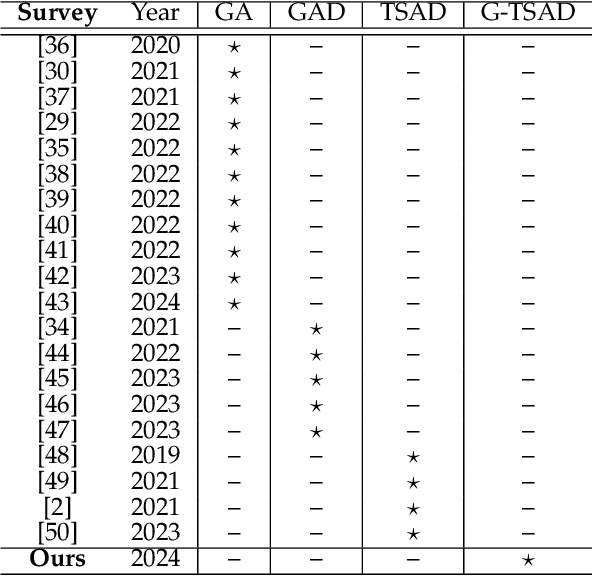
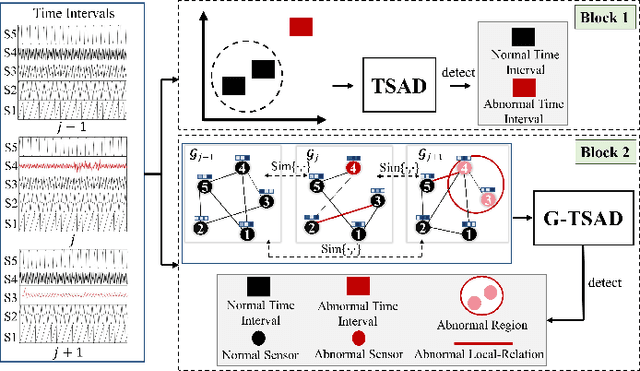
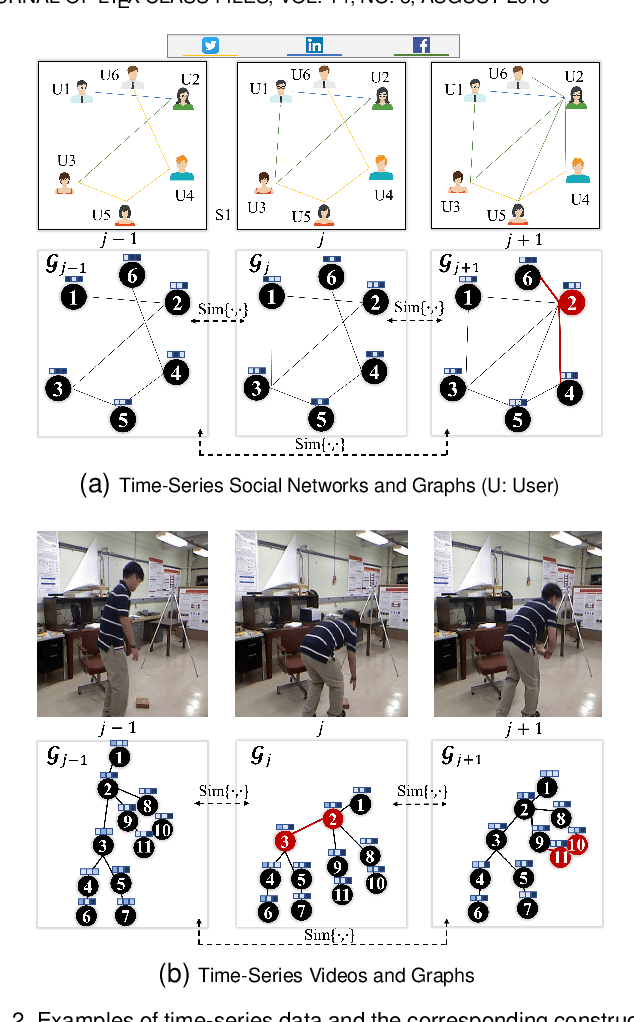
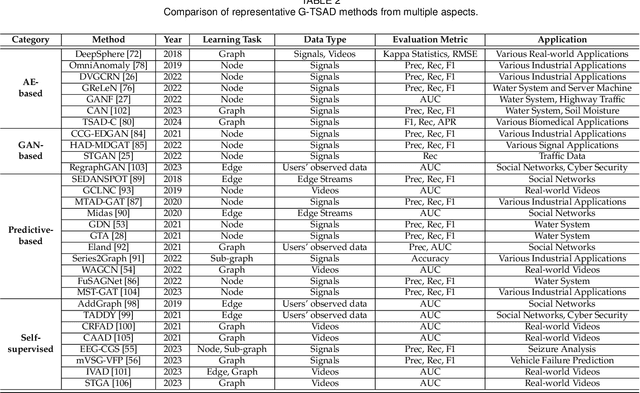
Abstract:With the recent advances in technology, a wide range of systems continues to collect a large amount of data over time and thus generating time series. Detecting anomalies in time series data is an important task in various applications such as e-commerce, cybersecurity, and health care monitoring. However, Time-series Anomaly Detection (TSAD) is very challenging as it requires considering both the temporal dependency and the structural dependency. Recent graph-based approaches have made impressive progress in tackling the challenges of this field. In this survey, we conduct a comprehensive and up-to-date review of Graph-based Time-series Anomaly Detection (G-TSAD). First, we explore the significant potential of graph-based methods in identifying different types of anomalies in time series data. Then, we provide a structured and comprehensive review of the state-of-the-art graph anomaly detection techniques in the context of time series. Finally, we discuss the technical challenges and potential future directions for possible improvements in this research field.
Self-Supervised Learning for Anomalous Channel Detection in EEG Graphs: Application to Seizure Analysis
Aug 15, 2022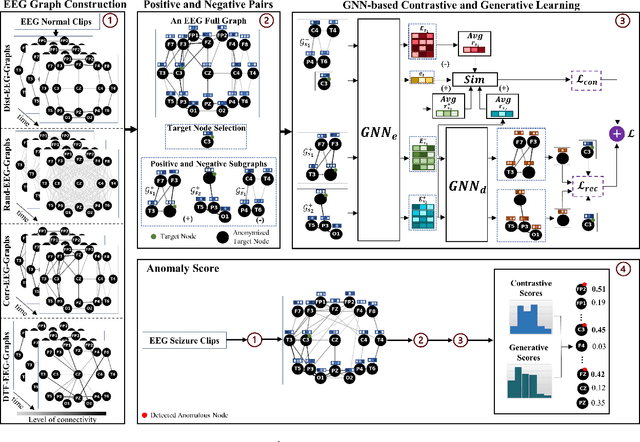

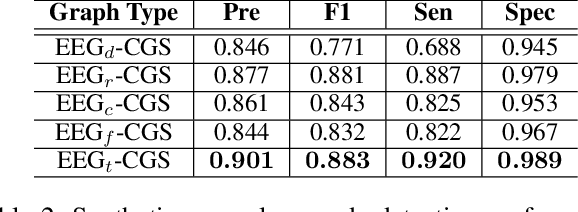
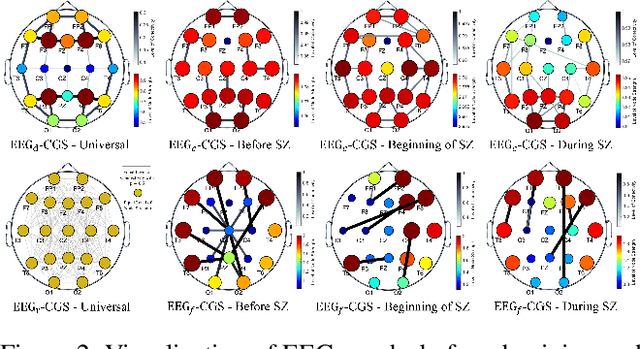
Abstract:Electroencephalogram (EEG) signals are effective tools towards seizure analysis where one of the most important challenges is accurate detection of seizure events and brain regions in which seizure happens or initiates. However, all existing machine learning-based algorithms for seizure analysis require access to the labeled seizure data while acquiring labeled data is very labor intensive, expensive, as well as clinicians dependent given the subjective nature of the visual qualitative interpretation of EEG signals. In this paper, we propose to detect seizure channels and clips in a self-supervised manner where no access to the seizure data is needed. The proposed method considers local structural and contextual information embedded in EEG graphs by employing positive and negative sub-graphs. We train our method through minimizing contrastive and generative losses. The employ of local EEG sub-graphs makes the algorithm an appropriate choice when accessing to the all EEG channels is impossible due to complications such as skull fractures. We conduct an extensive set of experiments on the largest seizure dataset and demonstrate that our proposed framework outperforms the state-of-the-art methods in the EEG-based seizure study. The proposed method is the only study that requires no access to the seizure data in its training phase, yet establishes a new state-of-the-art to the field, and outperforms all related supervised methods.
Self-Supervised Anomaly Detection: A Survey and Outlook
May 12, 2022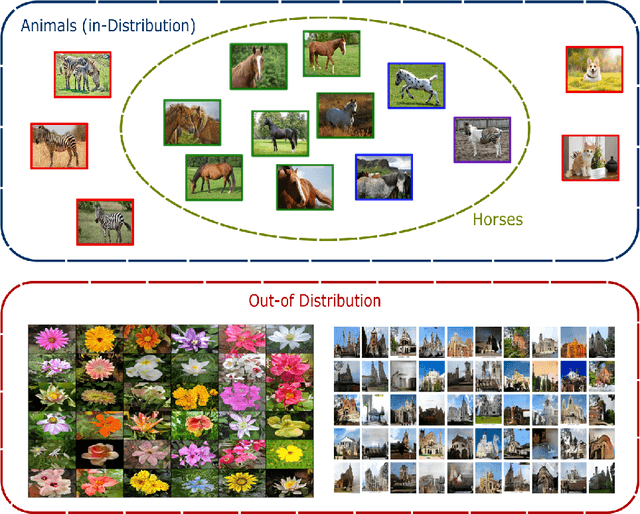


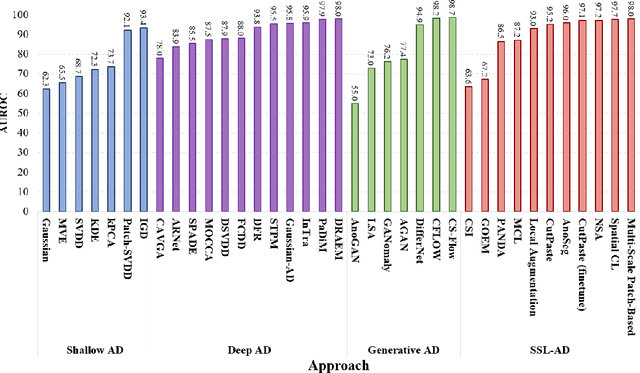
Abstract:Over the past few years, anomaly detection, a subfield of machine learning that is mainly concerned with the detection of rare events, witnessed an immense improvement following the unprecedented growth of deep learning models. Recently, the emergence of self-supervised learning has sparked the development of new anomaly detection algorithms that surpassed state-of-the-art accuracy by a significant margin. This paper aims to review the current approaches in self-supervised anomaly detection. We present technical details of the common approaches and discuss their strengths and drawbacks. We also compare the performance of these models against each other and other state-of-the-art anomaly detection models. Finally, we discuss a variety of new directions for improving the existing algorithms.
 Add to Chrome
Add to Chrome Add to Firefox
Add to Firefox Add to Edge
Add to Edge